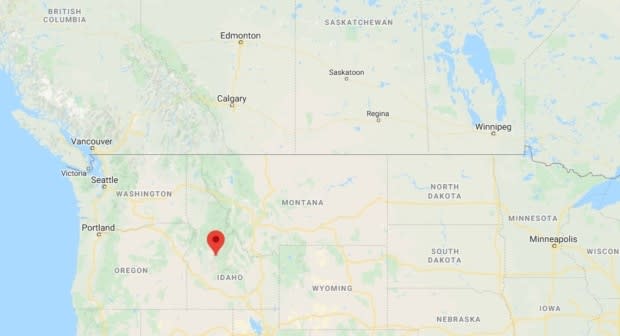6.5-magnitude Idaho earthquake felt in Calgary
Calgary, a prairie city far from any nearby fault lines, felt an unfamiliar sensation early Tuesday evening — an earthquake.
A 6.5 magnitude quake occurred at a depth of 10 kilometres near Challis, Idaho, at 5:52 p.m. MT, and was felt in Calgary just a few minutes later.
The epicentre of the quake was nearly 700 kilometres southwest of Calgary.
Some residents were quick to react to their buildings trembling on social media.
Tom Sampson, chief of the Calgary Emergency Management Agency, tweeted that the lights swayed in the city's emergency operations centre — where his team has been busy since the city declared a state of local emergency to respond to the COVID-19 crisis.
John Cassidy, a seismologist with Natural Resources Canada, said the earthquake was a large one, and was felt in southern B.C., Montana and Utah as well.
"The shaking in Canada is not particularly strong, it certainly isn't damaging shaking, but it certainly was noticeable by many people," he said.
"At great distances, typically what you feel are what we call surface waves. These are almost like waves on the ocean … those waves are relatively slow, and they are the kind of waves that can get high buildings shaking, so high rises will tend to sway back and forth during these types of earthquakes."
Cassidy said it's been decades since Idaho last experienced a quake of this size, but its not extremely unusual for the region. He said globally, there are about 120 earthquakes of that size each year.
The police department in Boise, Idaho, tweeted that there were no immediate reports of damage or injuries.
Marcus Smith, an emergency room health unit co-ordinator in Ketchum, Idaho, said the hospital, about 104 kilometres south of the epicentre, shook but the quake didn't interfere with the treatment of any patients.
The hospital in Blaine County is on the front line of Idaho's coronavirus outbreak, in a region with the nation's highest per-capita rates of known COVID-19 cases outside of New York City and its surrounding counties.
"It felt like a wave going through the ground, so I knew right away what it was. It just felt like waves going through the ground," he said.
The earthquake added stress during an already tense time for the region, but Smith said everything seemed fine, for now.
"Until the next one, I guess," Smith said. "I mean, that's what we do. We're all good."
Five aftershocks
A 4.6-magnitude aftershock happened at 6:27 p.m. MT, according to the United States Geological Survey, and four other small aftershocks followed.
Dr. Lucy Jones, a seismologist at Caltech, said the Idaho region has an earthquake of about this size every 30 or 40 years. The most recent one, a magnitude 7.0 earthquake near Borah Peak in 1983, killed two children and caused an estimated $12.5 million in property damage.
That quake was along what scientists call a "normal fault," with the quake causing vertical movement, she said. Tuesday's quake appeared to be on an unmapped "strike-slip fault," causing mostly horizontal movement along the fault line.
"This is one that wasn't obvious enough to be mapped before now," Jones said.

Unmapped faults of this size are rarer in highly populated areas like California, she said, but in sparsely populated and remote regions like central Idaho they're less likely to cause damage and less likely to be a focus of geologists and seismologists.
The last time Calgarians felt a large earthquake was in 2017, when a 5.8-magnitude quake shook Montana.
While more than 1,000 earthquakes happen in Western Canada each year, the majority happen along the Pacific Coast, with the quakes sharply reducing in intensity and frequency east of the Rockies.
